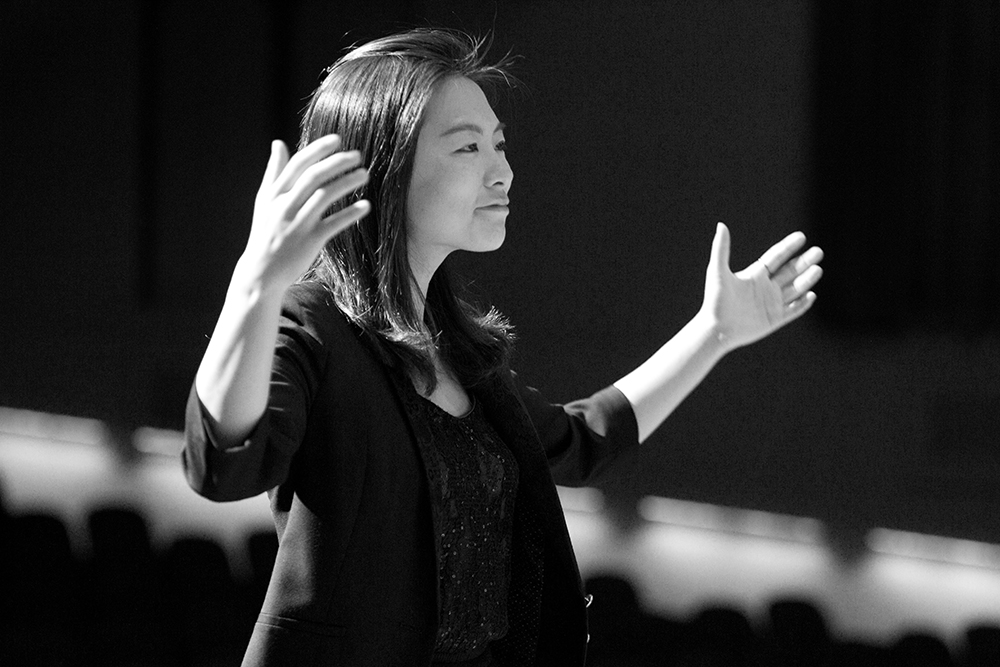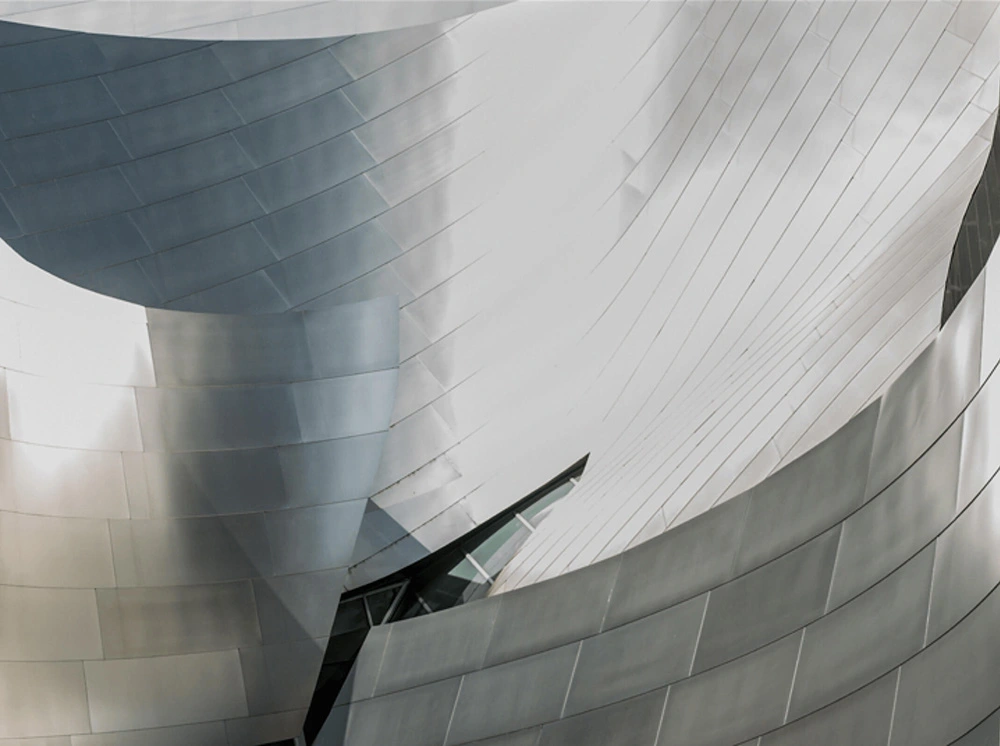- 2017-11-18
Let All That Have Breath Praise: The Motets of J.S. Bach
Associate Conductor Jenny Wong makes her solo conducting debut at Walt Disney Concert Hall on Dec 10.
When you consider the centrality of sacred choral music in Johann Sebastian Bach’s creative life, it comes as something of a surprise to realize what a small proportion of his extant catalogue is taken up by the genre of the motet: small enough, in fact, to be encompassed on a single program. Yet these pieces contain some of the very finest — and most challenging — examples of Bach’s art.
“While many people are drawn to the drama and epic nature of the Passions,” says Maestra Jenny Wong, “some aficionados rank these six motets as Bach’s absolute gems.” Along with their intricate contrapuntal and choral craft, she adds, the motets are crammed with marvelous instances of “emotional text painting” and ultimately convey a consoling message, regardless of personal faith: “This is another way for Bach to say: Redemption can win over sin, life can win over death. There’s a great overarching sense of comfort in this music. Regardless of whether someone is religious, the motets are a good place to revisit why Bach did what he did and why we do what we do.”

Jenny Wong, conductor
While the six canonical motets are numbered consecutively as BWV 225-230, Bach did not compose them as a group as he did the Cello Suites, for example. The production cycle of his cantatas was dictated by the liturgical calendar; in contrast, Bach wrote motets as one-offs for unique occasions — above all, as memorial pieces for funeral celebrations (though scholars have speculated on some exceptions to this rule). And the six motets that have survived likely represent but a handful of the total Bach actually composed. Overall, they are products of his first eight years in Leipzig, apparently written between 1723 and 1731 — though even here scholars debate exceptions among particular motets. (As a footnote, a few other motets associated with Bach may have involved his participation; the choral piece O Jesu Christ, mein Lebens Licht (BWV 118) was recently reclassified as a motet but stands apart from the BWV 225–230 series on account of its written-out instrumentation.)
“As predominantly funerary pieces,” observes John Eliot Gardiner in Bach: Music in the Castle of Heaven, “the motets epitomize the Lutheran longing for completion and union with God and that deeply implanted idea of heavenly love which gave justification to the lives of its adherents. They speak to us very directly, because, like several of the cantatas that take the ars moriendi as their subject matter, they address something we all share with Bach — our mortality.”
Historically, Bach inherited the motet tradition as practiced in the North from such predecessors as Heinrich Schütz and even members of his own family. This lineage evolved into two branches in J.S. Bach’s work: the motets and the cantatas. The primary differences from the larger-scale cantatas are, first, that the motets are chorally conceived, lacking the division into solo recitatives and arias that characterize Bach’s cantatas; and, second, that the motets are essentially vocal works, accompanied only by continuo.
This is the Los Angeles Master Chorale’s first performance of the complete motets in one concert. Four of the six motets are scored for double choir (according to the traditional practice inherited by Bach): here, a total of 48 singers divided into 24 each. Wong in general follows the usual practice of including accompanying continuo (here, portative organ and cello), omitting it in some instances for timbral variation (for example in Jesu, meine Freude, whose more intimate sections are well suited to cappella texture). Following are some comments on the six motets in the order they are being performed.
SINGET DEM HERRNE IN NEUES LIED (“SING UNTO THE LORD A NEW SONG”), BWV 225 —Likely composed in 1726 or 1727, this motet is particularly demanding for the singers. In fact, rather than the usual case of a funeral motet, it may represent, according to Bach expert Christoph Wolff, a “choral etude” — that is, a motet written for pedagogical purposes. Among Bach’s responsibilities as Thomaskantor in Leipzig was the musical education of the students at the St. Thomas School.
Wolff posits that this double-choir motet, with its ping-ponging on the word “sing” in the first section and culminating four-part fugue in the last, would have made an ideal example to train his students “in the vocal techniques and genres … that [Bach] needed for his demanding cantata repertoire.” Wolff believes the texts of the outer movements (from Psalms 98 and 150) were especially suitable “for teaching how such a piece of music fit into the daily lives and duties of the choral scholars.” The middle movement sets a hymn text by the Lutheran reformer Johann Gramann (1487–1541).
Characteristic of Bach’s practice with the motet is his transformation of the genre into a more-ambitious composition: in this case, a three-movement choral concerto with fast-slow-fast movements. The traditional motet, based on chorales that would have been very familiar to the congregation, tended to be simpler. Gardiner also praises it as containing “some of the most exhilarating dance-impregnated music Bach ever wrote.”
One fascinating story from the afterlife of this motet: Mozart is reported to have been deeply impressed when, during a visit to Leipzig in 1789, he heard a performance of Singet dem Herrn by the current crop of students.
KOMM, JESU, KOMM (“COME, JESUS, COME”) , BWV 229 — With a text by the Leipzig poet and former St. Thomas School student Paul Thymich (1656–1694), this motet is, for Gardiner, “the most intimate and touching of [the] double-choir motets” and transcends “the manipulation of spatially separate blocks of sound pioneered by the Venetian polychoralists and the rhetorically conceived dialogues of … Schütz.”
Bach effects catharsis by leading us out of the darkness of the first stanza, with its engrossing choral depiction of the human condition — his treatment of the phrase “der saure Weg” (“the bitter way”) represents the perfection of Bachian craft, moving upward from the basses to form a web of total despair. Gardiner motes that the second stanza responds with “bold, unprecedented contrapuntal fantasy” and achieves a degree of “lyricism and ecstasy … [that] can be found in several arias in his cantatas but seldom in their choruses.”
FÜRCHTE DICH NICHT (“DO NOT FEAR"), BWV 228 — Possibly written before Leipzig, during Bach’s Weimar years, this double-choir motet mingles texts from Isaiah with a hymn by the Lutheran theological Paul Gerhardt (1607–1676). The writing features a remarkable use of chromatic side-steps and a virtuoso juxtaposition of the chorale melody on high with a double fugue. Another oddity of this composition is the sudden reprise of the opening music — compact and clipped, in marked contrast to the elaborate treatment of the fugal display.
DER GEIST HILFT UNSER SCHWACHHE IT AUF ( “THE SPIRIT GIVES AID TO OUR WEAKNESS”), BWV 226 — This is the one motet whose specific occasion is known. Bach wrote it for the funeral service in October 1729 of Johann Heinrich Ernesti, longtime rector of the St. Thomas School. Also unique about this motet is the fact that the surviving score includes parts for strings and winds (doubling vocal lines in the two choirs, respectively) — though these are often dispensed with in modern-day performances.
The texts of the first two sections are from Paul’s Epistle to the Romans; the third comes from a hymn by Martin Luther. The words prompt remarkably innovative antiphonal writing: note, for example, the animated interplay of graceful music shared by the two choirs to evoke the Holy Spirit in the first section. Despite the grim occasion of a funeral service, the message is what matters, and that allows for some of Bach’s most optimistic musical expression.
JESU, MEINE FREUDE (“JESUS, MY JOY” ), BWV 227— This is the longest and most structurally complex of the six motets and is cast in 11 separate movements. While four of the motets call for double choir, Jesu, meine Freude is unusual in being scored for five voice parts, with a second soprano line (a feature it shares with Bach’s Magnificat).
Bach possibly composed this motet in 1723 for the funeral of the wife of a Leipzig official. Wolff, however, classifies Jesu, meine Freude as another “choral etude,” as he does Singet dem Herrn — an interpretation lent credibility by the variety of types of choral writing involved here (for example: chorale; choral concerto; three voice textures for the women alone in movement 4 and for alto, tenor, bass in movement 8; and double fugue).
Once again, Bach draws from Paul’s Epistle to the Romans (for the even-numbered movements), but these texts are alternated with stanzas from a hymn by the poet Johann Franck (1618– 1677) in the odd-numbered movements. The entire motet pivots around a fugal setting, at the center, of a key teaching of the Lutheran faith (“Ihr aber seid nicht fleischlich sondern geistlich” — “You however are not of the flesh but of the spirit…”). The whole has been interpreted as a symmetrical structure, with corresponding movements mirroring each other.
“If one wanted to pick a single example of how Bach harnessed his compositional prowess and capacity for invention as a means of articulating his faith and zeal,” writes Gardiner, “this motet would be it.”
LOBET DEN HERRN, ALLE HE IDEN (“PRAISE THE LORD, ALL YE HEATHEN”), BWV 230 — The most concise of the six motets, this is the only one scored for only four vocal parts and with an independent continuo line included in the score. While BWV 230 has been the subject of debates over authenticity, it is included in the New Bach Edition. There is also the possibility that it is an excerpt from a now-lost cantata. Whatever the case, Bach here gives us an example of his contrapuntal and homophonic writing in juxtaposition. The text is from the first two lines of Psalm 117 (in the vernacular German of Luther’s Bible, of course, as for the other biblical texts he sets in the motets).
The first two sections are closely connected and introduce two fugue subjects (one for each of the Psalm’s first two lines). But these busy textures give way to a simpler style as Bach sets the third and fourth lines of the Psalm (“Denn seine Gnade und Wahrheit”). After this, the texture again becomes polyphonically rich to amplify the implications of “eternity” against a long-held note in the altos. Ending the motet, a triple-meter fugue on “Alleluja” represents, like its cousin in Singet dem Herrn, Bach’s apotheosis of the dance.
Thomas May, program annotator for the Los Angeles Master Chorale, writes about the arts and blogs at memeteria.com.



